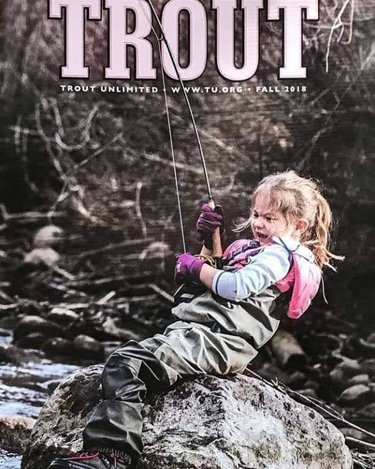

The Trichoptera, commonly called sedge flies, are those busy flies one sees emerging with a pop, then flitting erratically above the surface of the stream. Caddis hatches drive trout crazy. One often sees trout chasing emerging caddis larvae to the surface, and then breaking water and leaping in the air to nail the insect. Caddises actually constitute a more important portion of the trout’s menu than the more beautiful and delicate mayflies (Ephemera), and are hardier and better able to survive warmer temperatures and pollution than many of the classic mayflies.
I’ve often collaborated with Trichoptera myself: at catching trout, not at creating art. Back when I was a bloodthirsty teenage meat fisherman and baitfished, my partner-in-crime John Zebraitis and I reposed especial confidence in the appeal of stone caddises as bait for trout. The caddises who built their nests of twigs, known as “stick bait,” were common and decently effective, but stone caddises were relatively rare, and could be found only in certain pools in particular streams. When we came on them, John and I felt like we’d won the lottery, knowing that our chances of tempting the reluctant 20″ old soak known to be lurking craftily in the deep hole were starting to look good.
Heaven only knows how big a trout John or I could have derricked out the mysterious depths of the unfathomed hole on the mighty Loyalsock at Hillsgrove had we only been equipped with a couple of these dazzling stone-cases. And I can picture with a smile the arguments we might have had about whether brookies go more for opals than for lapis, and just how effective turquoise is in low water.
Spring issue, Cabinet:
(The photos illustrate) the results of an unusual artistic collaboration between the French artist Hubert Duprat and a group of caddis fly larvae. A small winged insect belonging to the order Trichoptera and closely related to the butterfly, caddis flies live near streams and ponds and produce aquatic larvae that protect their developing bodies by manufacturing sheaths, or cases, spun from silk and incorporating substances—grains of sand, particles of mineral or plant material, bits of fish bone or crustacean shell—readily available in their benthic ecosystem. The larvae are remarkably adaptable: if other suitable materials are introduced into their environment, they will often incorporate those as well.
Duprat, who was born in 1957, began working with caddis fly larvae in the early 1980s. An avid naturalist since childhood, he was aware of the caddis fly in its role as a favored bait for trout fishermen, but his idea for the project depicted here began, he has said, after observing prospectors panning for gold in the Ariège river in southwestern France. After collecting the larvae from their normal environments, he relocates them to his studio where he gently removes their own natural cases and then places them in aquaria that he fills with alternative materials from which they can begin to recreate their protective sheaths. He began with only gold spangles but has since also added the kinds of semi-precious and precious stones (including turquoise, opals, lapis lazuli and coral, as well as pearls, rubies, sapphires, and diamonds) seen here. The insects do not always incorporate all the available materials into their case designs, and certain larvae, Duprat notes, seem to have better facility with some materials than with others. Additionally, cases built by one insect and then discarded when it evolves into its fly state are sometimes recovered by other larvae, who may repurpose it by adding to or altering its size and form.
More on Duprat:
Leonardo
——————————–
Hat tip to Karen L. Myers.







